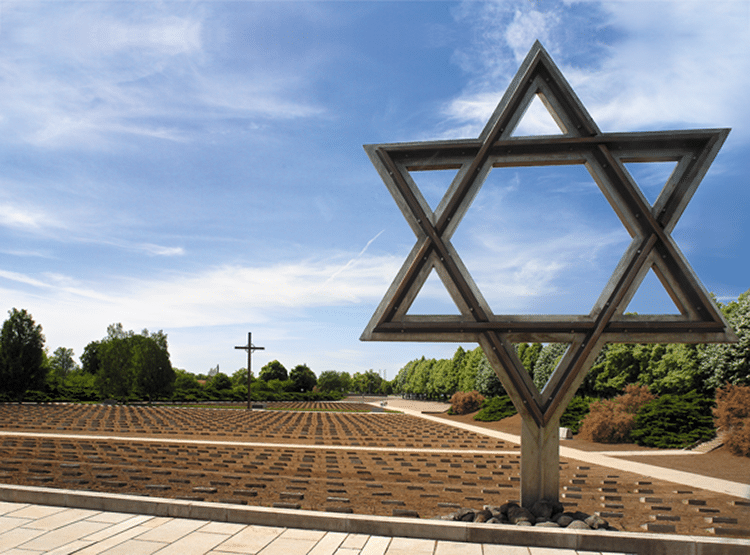
The Czech Republic is rich in remnants of a flourishing Jewish community, at one time the largest and most vibrant in the world. While Prague is the epicenter of Czech Jewish memorabilia, tracking down Jewish heritage in other parts of the country can be a fascinating voyage of discovery, starting from sites near Prague to Pilzeň in the west, Mikulov in the south and more. Along the various routes, take time to explore some of the Czech Republic’s numerous castles, hike in its forests or chill out at one of its famous spas.
Synagogue in PilzenThroughout history Jews, who settled in what was originally the regions of Bohemia and Moravia (today the Czech Republic) as early as the 10th century, have known both prosperity and peril. Good times have been interspersed with lengthy periods of persecution. After the fall of the Austro-Hungarian Empire during World War I, the two regions along with Silesia declared their independence and united to become Czechoslovakia. Jews played a dominant role in the country’s economy and industry and built schools and synagogues. According to a 1930 census, Czechoslovakia had a population of 356,830 Jews. Of those, 118,000 resided in what is now the Czech Republic. But the Holocaust brought a tragic halt to the growth of this community. About 89,000 Jews were deported to concentration camps where at least 78,000 perished.
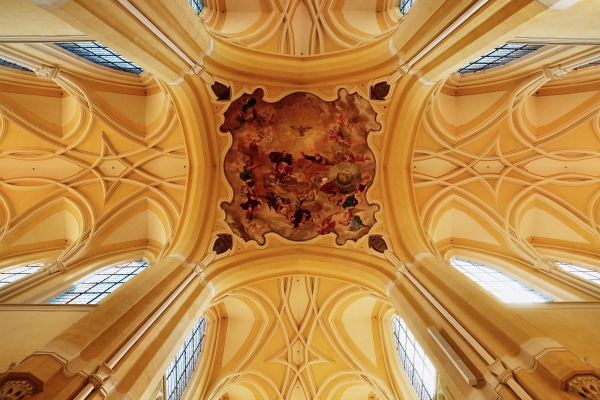
During World War II, about 70 synagogues were destroyed by the Nazis. More than 150 provincial communities in Bohemia and Moravia were eradicated. Destruction continued after the war during the communist era when more synagogues were demolished or converted for other uses. Today, however, there are at least 145 synagogues throughout the country, 65 of which have been reconstructed since 1989. Seven are still used as places of worship while others serve as museums or cultural venues. This is good news for anyone looking to connect with their Jewish roots in Czech Republic. After Communism fell in 1989, Jewish life in Czechoslovakia continued a process of revival. In 1993, Czechoslovakia split into two constituent states: the Czech Republic and the Slovak Republic. At that time there were about 3,000 Jews in the Czech Republic, including 1,300 in Prague where an old age home for Jews opened in 1993 and a Jewish kindergarten opened in 1994. Today about 5,000 Jews call Prague home. A few other Czech cities have smaller communities. The existing synagogues as well as streets, ghettoes and cemeteries throughout the country, are testimony to both the suffering and prosperity of Jews during past decades. Explore this vibrant country stopping to visit the following towns to learn more about the legacy of Czech Jews. You could begin your journey with the sites and towns nearest to Prague.
TEREZÍN (Theresienstadt)
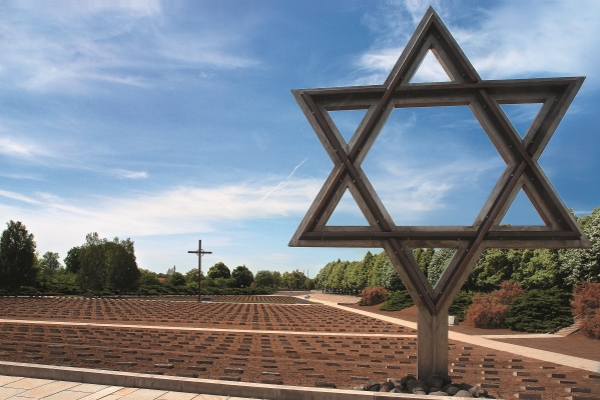
This town just north of Prague, named by Joseph II after his mother, Empress Maria Theresa, is part of a tragic chapter in Jewish history. In the 18th century it served as a fortress, with both a Main and Small fortress to protect Prague from invaders. The Small Fortress was used as the Hapsburg monarchy’s prison during World War I, and amongst its inmates were the plotters of the Sarajevo assassination of Archduke Franz Ferdinand along with Gavrilo Princip who carried it out. He died in the Small Fortress in 1918. Prior to the war Terezín had a population of about 5,000 but that dramatically increased during the Nazi era when it became known by its German name, Theresienstadt. Well known Jewish musicians, writers, artists and leaders from the Czech Republic and eight other countries were sent there for “safe”keeping from the stresses of war. This was merely Hitler’s attempt to stave off criticism and objections from the civilized world. The town soon sheltered more than 55,000 Jews in its ghetto where starvation and disease were rampant. Theresienstadt was not a death camp like Auschwitz-Birkenau or Treblinka, however ultimately some 200,000 men, women and children passed through here enroute to the east and probable death. After the war, the town was renamed Terezín and the Czech government maintained a military garrison there. With the departure of the troops in 1996, the town’s fragile economy plummeted. Terezín today is still struggling to develop a more diverse economy which includes the necessary development of heritage tourism. Today, the Small Fortress and the Ghetto can be visited as well as the Crematorium site and National Cemetery.
LIDICE
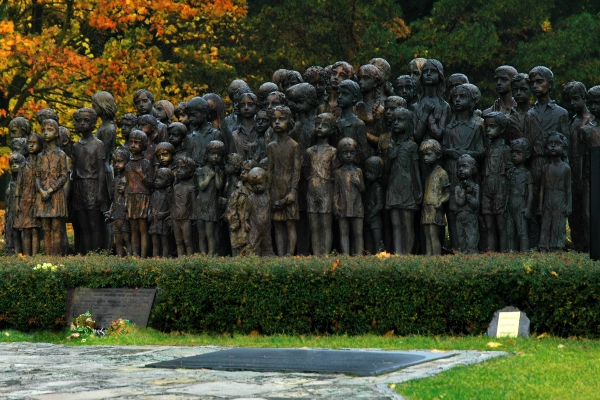
In 1942 both men and boys over the age of 16 were shot by the Nazis here, while women and children were deported to concentration camps. The original village, about 10 miles northwest of Prague, was completely destroyed by German forces in retaliation for the assassination of Reich Protector Reinhard Heydrich in the spring of 1942. A sculpture, “The Memorial to the Children Victims of the War,” overlooks the site of the old village of Lidice. A cross with a crown of thorns marks the mass grave of the Lidice men and there is also a memorial area flanked by a museum and a small exhibition hall. In 1955 a “Rosarium” of 29,000 rose bushes was created beside an avenue of lindens overlooking the site of the old village. It was neglected for many years, but a new one with 21,000 bushes was designed and created in 2001.
ȞERMANŮV MĔSTEC
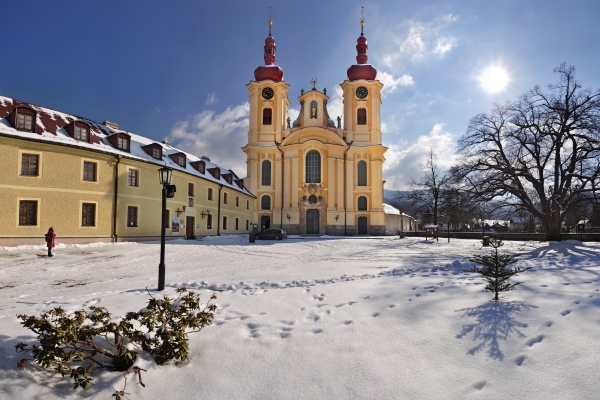
Located east of Prague in the Iron Mountain region, the town has several Jewish sites open to visitors: a cemetery, the former synagogue and the building where a Jewish school was located. After extensive renovation, the synagogue reopened in 2001 and is used for cultural events. Its origins date to the 18th century, but during the 19th century it was reconstructed in neo-Romantic style. The Jewish school, built in 1862, now houses a gallery with an exhibition of works by East Bohemian artists of the 20th century.
TŘEBIČ
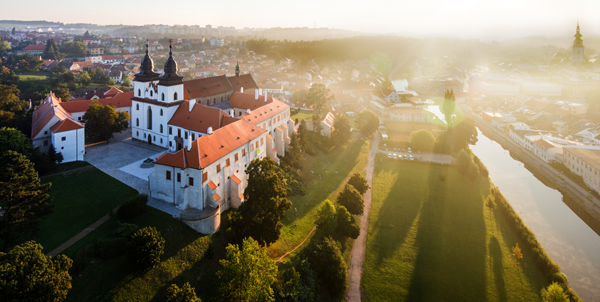
A picturesque town spread out on both banks of the Jihlava River in the Bohemian-Moravian highlands (central Czech Republic), Trěbič was named a UNESCO World Heritage site in 2003, namely because its relics, both Jewish and Christian, are evidence of the coexistence and interchanges between Jews and Christians. A Benedictine Monastery was founded in the town at a river crossing in 1101. This spurred development of a market which attracted Jewish traders. St. Procopius Basilica, an abbey dating to the 13th century, was originally part of the monastery and is now linked to a castle which was built on the site in the 16th century. It’s a gem of medieval architecture and is worth a visit along with the other numerous churches in Trěbič.
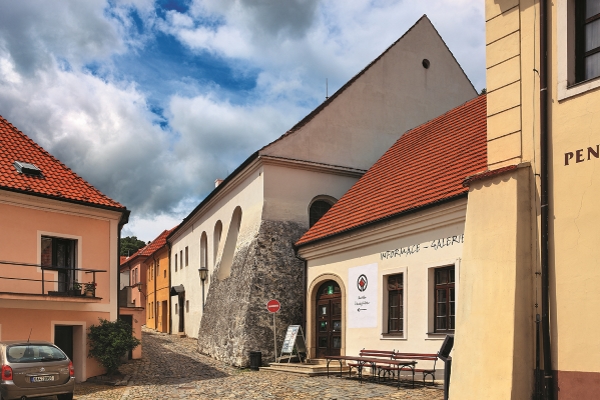
Trěbič‘s Jewish quarter with its two main streets and narrow medieval alleys is thought to be the best preserved in Europe. Many of the 123 houses here are still intact – some with Renaissance and Baroque features on the facades. The Jewish Town Hall, Rabbinate, school, and hospital are also still standing. In the quarter’s early days, its residents were involved in money lending as well as crafts, such as tanning and glove making and from the beginning it had its own self-government. In the 16th century orders specified that Jews be expelled from the quarter, but they weren’t enforced. After 1875 when Jews were free to move and buy property elsewhere, the wealthy moved out, leaving the ghetto to the poor. Some 1,500 Jews were living there in 1890 but by the 1930s, only about 300 remained. All were deported during World War II and none are presently there. Třebič’s Synagogue (1639-42), known as the New Synagogue, is a simple Baroque building. A women’s gallery was added to the northern part in 1837, since in Jewish tradition, men and women cannot occupy the same space in the sanctuary. For many years it wasn’t used and fell into disrepair in the 1980s. Renovation was completed on it in 1997 and it’s now used for exhibitions, concerts and other cultural events. The former women’s gallery houses a permanent exhibition of Jewish culture with many valuable objects used in secular and religious life on display. The Jewish Cemetery consists of two parts, one from the 15th century and the other from the 19th century. Notable carvings embellish some of the 3,000 tombstones. A ceremonial hall from 1903 located at the entrance is still intact. Nature lovers will want to explore Třebič’s surroundings, an undulating landscape of forests, ponds and river valleys with an extensive network of hiking trails.
MIKULOV
Amidst a stunning landscape of vineyards and white cliffs, this charming town in the southern part of the country near the Austrian border has an impressive Baroque chateau, as well as many old and picturesque houses that were part of a former Jewish ghetto. A row of these houses has been declared a cultural monument. Mikulov’s Jewish community was once one of the largest in Moravia and a major center of the Jewish religion. After being expelled from Vienna and Lower Austria in the early 15th century, Jews found refuge here. The town is known for its annual Palava Wine Harvest Festival bringing visitors from all over the globe. www.mikulov.cz
PILZEŇ
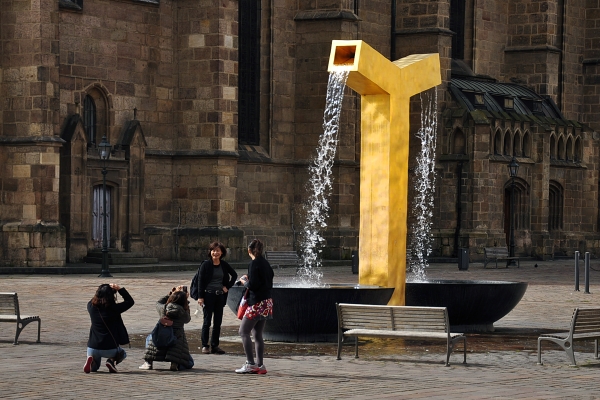
The Czech Republic’s fourth largest city is a must in pursuit of Jewish heritage – and much more. It was recently named the European Capital of Culture 2015 (along with Mons in Belgium) and is now being included on many “Top 10 to Visit” lists. The town center has been declared a historic landmark with its Great Synagogue among its architectural masterpieces. It is the second largest synagogue in Europe and the third largest in the world. Built in 1888 in the Moorish-Romanesque style with two main towers dominating the front of the building, it is rich in decoration. Originally the towers were supposed to be much taller, but city officials did not want the structure competing in height with the nearby cathedral. It is still in use today for religious services as well as serving as a venue for exhibitions and concerts thanks to its excellent acoustics and unique pneumatic organ. Other notable Pilzeň buildings include the Gothic St. Bartholomew’s Cathedral and the Renaissance City Hall.
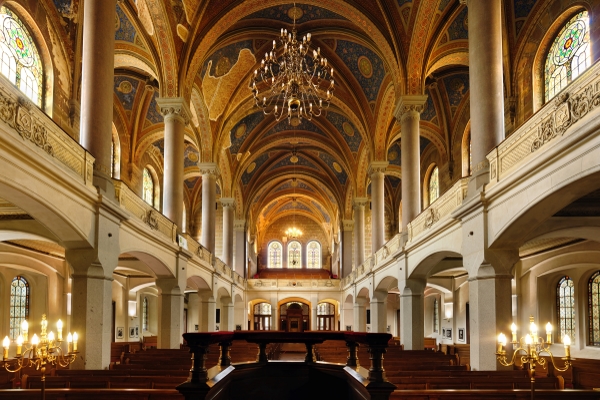
And while in Pilzeň don’t neglect beer. “Pils” or “pilsner,” a type of pale lager, was named after the city where it was first produced in 1842. Tour the Pilsner Urquell factory for a tasting and more.
www.plzen2015.cz/en/o-projektu/the-european-capital-of-culture-concept.
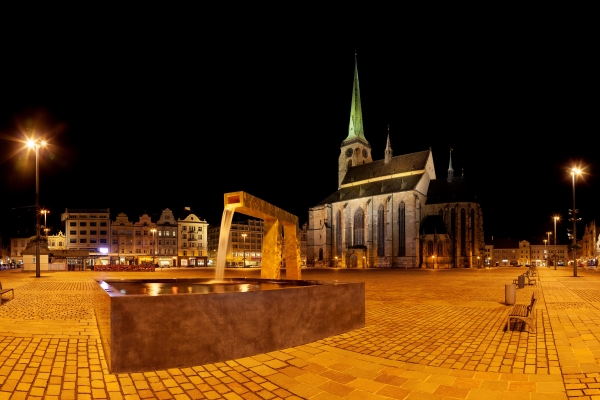
BOSKOVICE
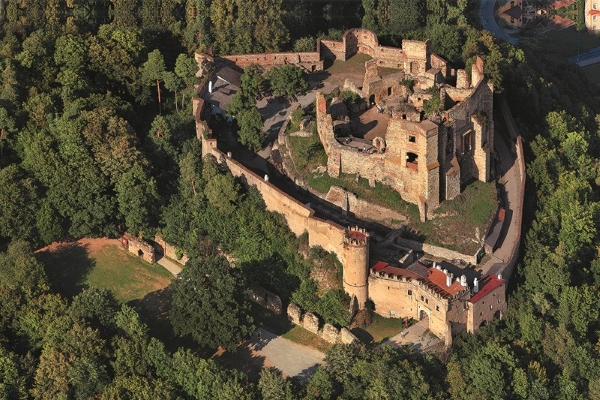
This town in southern Moravia has a castle, chateau – plus an interesting Jewish quarter, a synagogue and Jewish cemetery. Jews first settled in the town about 1343, but a thriving Jewish community developed later, in the mid 15th century. The baroque synagogue, whose foundations date from 1639, is a jewel with splendid fresco paintings dating from the early 18th century which include Hebraic liturgical texts by Polish refugees. Opened to the public in 2002 after reconstruction, the synagogue is now home to a permanent exhibition on the Boskovice Jewish quarter, documenting the history of the local Jewish community. The cemetery, one of the largest Jewish in the Czech Republic (3.7 acres), contains 2,400 tombstones.
VELKÉ MEZIŘÍČÍ
Under a Gothic castle in the Bohemian-Moravian Highlands, Velke Mezirici was home to an independent Jewish community beginning in the 17th century. Visit its well-preserved Jewish cemetery with Baroque tombstones from those early years.
*In addition to the towns and sites mentioned here, traces of former Jewish quarters still exist in some 180 towns, cities and villages in the Czech Republic. BRECLAV has a newly restored synagogue. PODIVIN, the site of the first written mention of Jews in Moravia in 1067, has a Jewish cemetery with a ritual hall and museum exhibit. There are Jewish sites in BRNO and remnants of a Jewish settlement in SAFOV – plus numerous other places of interest to visit in the pursuit of the Jewish heritage in the Czech Republic.
www.travelsquire.com/czech-republic/stories/
The international dialing code for Czech Republic is 420.
[alert type=white]
The following tour operators specialize in Jewish ancestry tours:
Kesher Tours –USA, New York, NY; (212) 481-3721; www.keshertours.com; keshertours@verizon.net
Arza World – USA; 147 W. 35th Street, New York, NY; 1 (888) 811-2812; www.arzaworld.com
Isram World – USA; 233 Park Avenue South, New York, NY; 1 (800) 223-7460; www.isramworld.com; info@Isramworld.com
Kesher Tours – USA, New York, NY; (212) 481-3721; www.keshertours.com; keshertours@verizon.net
Precious Legacy Tours – Czech Republic; Kaprova 13, Prague; +420-222 (32) 1954; www.legacytours.net; luba@legacytours.net
Wittmann Tours – Czech Republic; Novotného lávka 200/5, Prague; +420-222-252-472; www.wittmann-tours.com; office@wittman-tours.com
Private Tours – Czech Republic; Křižíkova 393/73, Prague; +420-604-254-334; jewish.tourstoprague.com; info@private-tours.net
Jewish Prague Travel – Czech Republic, Prague; +420 604 857 554; www.kosherprague.com; info@kosherprague.com
Avantgarde Prague – Czech Republic; Jáchymova 3, Prague; +420-226-235-080; www.avantgarde-prague.cz/; info@avantgarde-prague.cz [/alert]
[alert type=white] From TS Editorial – For those wanting to discover a revolutionary new concept in Jewish Heritage travel and live close to the NYC area, Czech Tourism NY in cooperation with New York’s 92nd Street Y’s “Center for Jewish Diversity” will be hosting a lecture by Professor Barry Goldsmith on Czech Jewish Architecture & Architects at the 92nd Street Y on Thursday evening, December 11, 2014 at 7:30. Professor Goldsmith will start in Prague’s well-known Jewish Quarter then segue to unknown Jewish architecture in Greater Prague, in Brno (the Czech Republic’s second city) and in the rest of the Czech Republic.Goldsmith’s new focus is on architecture built by Jews for use by everyone — Jews and Gentiles. Czech Jewish architects from the late 19th century through the 21st century designed in every building style. And in Brno, Jews were in the forefront of 20th-century “Functionalism” (“Modernism” in the U.S.) Many Czech Jewish architects studied with and were even proteges of the greats, such as Ludwig Mies van der Rohe, Adolf Loos, Walter Gropius, and Le Corbusier.
[/alert]

